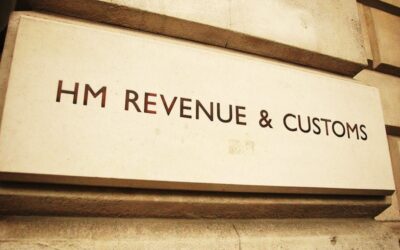The new chancellor, Rishi Sunak, has had a busy month. Thrust into the hot seat as the government prepared to present its first budget since October 2018, one of the first items to hit his desk, a global pandemic.
Although the world’s attention is rightly focused on the Coronavirus, tackling tax avoidance remains a hugely important priority for the public. For a number of years polling has consistently shown that tax avoidance is viewed as morally wrong and the public have demanded that the government do more to tackle the problem.
At TaxWatch we believe that tax avoidance is a complex issue that takes many forms. It is not something which can be solved with one simple policy or tax change. If that was the case the issue would have been dealt with many years ago!
In this article, we set out two issues facing the Chancellor on tax avoidance and tax fraud as he puts the final touches on his first budget.
The Digital Services Tax
Over the last ten years, the most high profile tax avoidance story has been the behaviour of the new digital giants, and the corporate structures they employ to shift billions of dollars of profits to tax havens every year.
Financial journalists have been publishing stories about Google’s extraordinarily low corporate tax rate since at least 2010. In that time digital companies have managed to get out of paying tens of billions of dollars in tax payments to governments around the world. In doing so, they have faced growing anger from both the public and regulatory authorities.
In 2013 the G8 mandated the OECD to come up with proposals to deal with the issue. However, when the Base Erosion and Profit Shifting plan was published in 2016, the digital economy was left on the too difficult shelf. Talks continue to this day, with the OECD aiming to agree on a plan to restructure the global tax system by the end of this year.
In the meantime, treasuries have continued to leak huge sums of money. Inaction at a multilateral level has led to unilateral action, with governments around the world seeking to introduce Digital Services Taxes.
The UK Digital Services Tax was always designed as a stop-gap measure to be put in place until an international agreement was reached on a new system of taxing digital companies. The introduction of it was delayed for two years in order to give the OECD process an opportunity to succeed. Now this time has expired, the tax is scheduled to apply from April. It is a blunt instrument, taxing the UK derived revenues of large social media platforms, search engines and online market places. It is a significant departure from the usual method of taxing companies, which focuses on profits and not turnover. As such it is controversial.
Some stopgap is clearly needed. Research by TaxWatch found that just five digital companies were avoiding almost £1bn in taxes a year in the UK. The Digital Services Tax, imperfect as it may be, ensures that at least some (and by no means all) of that money is recouped by the UK government.
A number of digital businesses will not be impacted, such as video streaming services and video games producers, despite these companies operating very similar tax avoidance strategies. In a recent adjournment debate, Dame Margaret Hodge MP called for the tax to be extended to such companies. We do not expect to see this happen in the budget, as the government response at the time was that to change the Digital Services Tax now would be too difficult.
Digital Services Taxes have become a major diplomatic issue, with huge pressure being put on countries to stop or delay their introduction by the United States Government, who have threatened trade sanctions for countries going ahead with the measure. Most companies impacted by digital services taxes are headquartered in the United States.
With the budget coming just weeks ahead of the UK tax coming into effect, any announcement on the Digital Services Tax, or even no announcement, will be highly significant.
Avoiding unintended consequences
Tax avoidance can be seen as an unintended consequence of government policy. By definition, tax avoidance is people using the tax system in a way that was never intended by the framers of tax policy.
A clear avoidance risk therefore emerges from the 1,190 tax reliefs and allowances which are part of the UK tax system. Tax reliefs reduce the amount of tax owed by a company or person based. In recent years, they have increasingly been used as a tool of economic policy, being granted to encourage a multitude of economic activities.
Tax reliefs have been introduced to encourage the production of films, video games, and spending on R&D to name a few. These schemes work by allowing companies to make additional deductions from their tax bills for spending money on the desired activities.
Although these types of tax reliefs are obviously popular with the people getting a benefit from them, they are also open to abuse. The history of tax reliefs shows that no sooner does the government come up with a scheme to promote one sector, a group of accountants and lawyers find inventive ways to claim it.
In recent years film tax relief has been the focus of a lot of media attention after a number of high profile celebrities were caught investing in a scheme which abused the film tax relief system.
A huge risk is posed by the research and development tax credit system, where there is very clear evidence of abuse. The government currently spends a little under £4.5bn on R&D tax credits, a figure which has quadrupled over the last decade.
These tax credits work by awarding companies credits based on the amount of money they spend on research and development activities. These credits can then be offset against their tax bills. If the company has no tax liability they can receive money back from the government.
In 2016-7, the last year where figures are complete, HMRC awarded credits to companies claiming that they spent a total of £32.3 billion in spending on R&D. However, the Office of National Statistics (ONS) recorded just £22.6bn of spending on UK R&D activities in 2017.1
It is unheard of for any tax relief to get anywhere near 100% take up, never mind more than 100%! The ONS data and the HMRC data are different and not directly comparable. They cover slightly different time periods, with the ONS looking at a calendar year whilst HMRC looks at the financial year. The HMRC data also counts some non-UK spending, which can be claimed under the R&D tax credit scheme (for example if a company subcontracts some R&D work to a non-UK company). The ONS data looks at UK spend only. However, the difference is very large, with the ONS data suggesting that R&D expenditure for tax purposes is 143% of UK R&D spend. This can’t simply be explained by differences in methodology, even the inclusion of non-UK spending. In fact, HMRC has identified the practice of some companies opening up UK subsidiaries with the sole purpose of routing payments through the UK to collect tax credits as an abuse of the system. The data suggests a worrying level of abuse.
The government accepts there is a problem. The last budget brought measures to cap the amount small businesses could claim in cash under the R&D tax credit scheme based on their UK payroll. It did this after identifying “fraudulent attempts to claim the SME scheme payable tax credit… even though they had no R&D activity.”2
These measures are due to come into effect in April this year. However, as recently observed by the National Audit Office, even when the changes to R&D tax credits announced in the 2018 budget are made, companies will still have until 2022 to claim under the old rules. This means that tax will continue to be lost for years after serious fraud in the system was identified.
The cap on SME R&D relief only deals with part of the problem. A significant amount of tax loss occurs from what is charitably termed “poor quality” R&D tax relief claims. This is where companies and their agents make claims for expenditure which should not be allowed, and the claim is not picked up by HMRC compliance staff, leading to an incorrect payment being made. According to the NAO:
“Following the increased assessment of tax at risk in 2018, HMRC is also exploring opportunities to improve its systems and processes for risk-assessing claims and preventing incorrect payments, which is likely to require both legislative change and funding.”3
This highlights a serious problem with the tax relief system. Tax reliefs can be very difficult to change, even where there is clear evidence of fraud in the system. Given that it is likely that the Chancellor will seek to increase spending on R&D tax credits in line with the commitment made in the 2019 Conservative Party Manifesto, it is important that this comes alongside more resources dedicated to tackling the abuse of the system.
Photo by Steve Smith on Unsplash
1 Office for National Statistics, Research and Development Tax Credit Statistics, October 2019, see table on page 16 for comparison of HMRC data with ONS data. https://assets.publishing.service.gov.uk/government/uploads/system/uploads/attachment_data/file/837282/Research_and_Development_Tax_Credits_Statistics_October_2019.pdf
2 HM Treasury, Preventing abuse of the R&D tax relied for SMEs: consultation, see paragraph 1.3 https://assets.publishing.service.gov.uk/government/uploads/system/uploads/attachment_data/file/790243/preventing_abuse_of_the_R_D_tax_relief_for_SMEs_consultation_web.pdf
3 National Audit Office, The management of tax expenditures, p35, https://www.nao.org.uk/wp-content/uploads/2020/02/The-management-of-tax-expenditure.pdf



